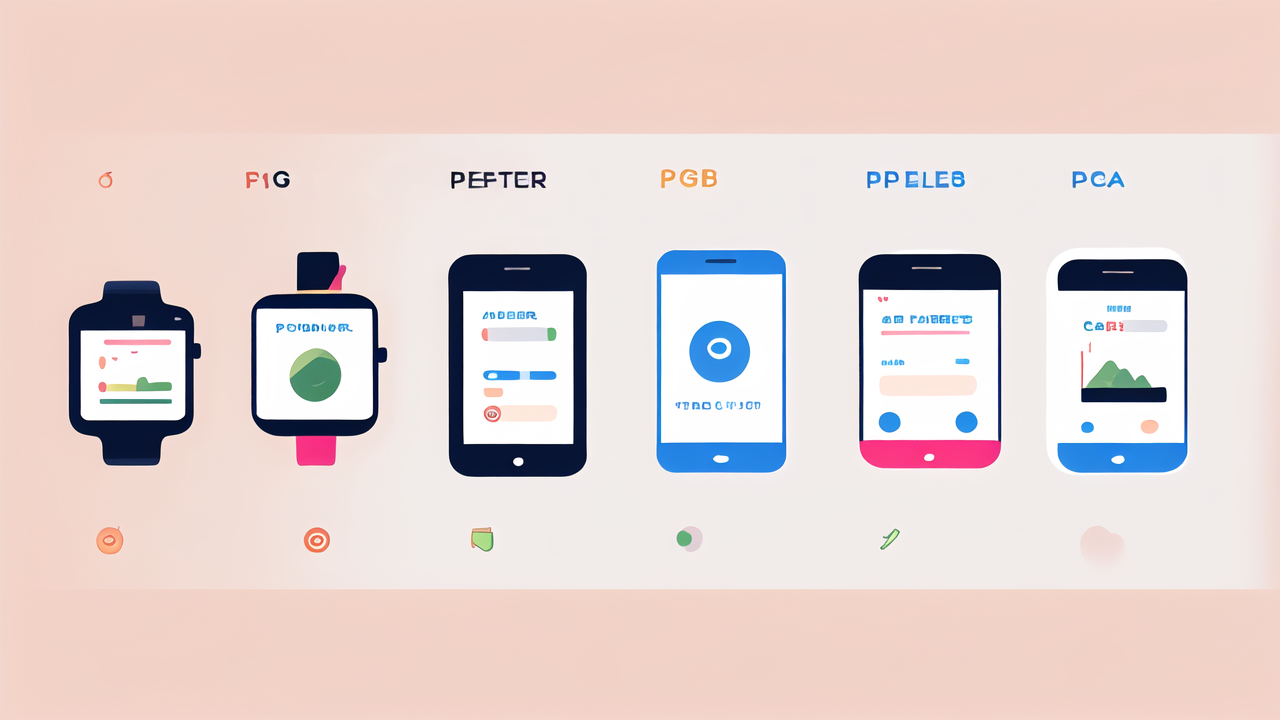Evolution of Smart Watch Technology in the United States
The Genesis of Wearable Fitness Devices
Wearable fitness devices have come a long way since their inception. The journey began with simple pedometers. These basic step counters paved the way for more advanced tech. Early devices like the Fitbit Tracker emerged in 2009. They could monitor steps, sleep, and calories burned. This marked the start of a new era in personal fitness tracking. As technology improved, so did these devices. They became smaller, more accurate, and packed with features. The rise of smartphones played a crucial role too. It allowed for easy data syncing and analysis. This laid the groundwork for the smart watches we know today.

Milestones in Smart Watch Innovation
Smart watch innovation has seen many milestones. In 2012, Pebble launched its first smart watch via Kickstarter. It was a huge success, showing the market's potential. Apple entered the scene in 2015 with the Apple Watch. This brought smart watches to the mainstream. Other tech giants like Samsung and Google followed suit. Each new model brought improvements in design, battery life, and features. Health tracking became more sophisticated. Heart rate monitors, ECG sensors, and blood oxygen level tracking were added. GPS integration made outdoor activity tracking more accurate. Water resistance allowed for swim tracking. These advancements made smart watches essential for fitness enthusiasts.
The Current State of the Smart Watch Market
Today, the smart watch market is booming. It's dominated by big names like Apple, Samsung, and Fitbit. But there's also room for niche players like Garmin for sports enthusiasts. The market offers a wide range of options. From budget-friendly fitness trackers to high-end luxury smart watches. Features have become more diverse. Some focus on health monitoring, others on style and customization. The integration with smartphones has deepened. Smart watches now offer call handling, message notifications, and mobile payments. The rise of 5G and IoT is opening new possibilities. Smart watches are becoming central hubs for personal tech ecosystems.
Key Features of Advanced Smart Watches
Integration of AI and Machine Learning
AI and machine learning are transforming smart watches. These technologies make devices smarter and more personalized. They can learn user habits and preferences over time. This allows for more accurate predictions and insights. For example, AI can detect irregular heart rhythms. It can also suggest workout routines based on past performance. Machine learning algorithms can identify sleep patterns. They offer tips for better rest. AI assistants like Siri or Google Assistant are now common in smart watches. They can handle voice commands, making the devices more hands-free. As AI improves, we can expect even more intuitive and helpful features.

Precision Tracking and Advanced Analytics
Modern smart watches offer incredibly precise tracking. They use a combination of sensors for this. Accelerometers measure steps and movement. Gyroscopes detect orientation. GPS tracks location for outdoor activities. Heart rate monitors use light sensors to measure pulse. Some even have ECG capabilities for more detailed heart health data. All this data is then processed to provide advanced analytics. Users can see detailed breakdowns of their workouts. This includes metrics like pace, cadence, and heart rate zones. Recovery time and training load are calculated. This helps prevent overtraining. Sleep tracking has also become more sophisticated. It can differentiate between light, deep, and REM sleep stages.
Lifestyle and Health Management Capabilities
Smart watches have evolved beyond just fitness tracking. They now offer comprehensive lifestyle and health management. Many can monitor stress levels through heart rate variability. They suggest breathing exercises when stress is detected. Menstrual cycle tracking is available for women's health. Some watches can measure blood oxygen levels. This is useful for high-altitude activities or sleep apnea detection. Hydration tracking reminds users to drink water. Fall detection can alert emergency services for older users. App ecosystems allow for endless customization. Users can add apps for meditation, nutrition tracking, or habit formation. Some watches even offer ECG features for heart health monitoring.
The Impact of Smart Watches on the Fitness Industry
Enhancing Consumer Fitness Regimens
Smart watches have revolutionized how people approach fitness. They provide real-time feedback during workouts. This motivates users to push harder and achieve goals. The ability to track progress over time keeps people engaged. Many watches offer guided workouts right on the wrist. This is like having a personal trainer always available. Social features allow users to compete with friends. This adds a fun, competitive element to fitness. The convenience of having all fitness data in one place is invaluable. It helps users make informed decisions about their health and fitness routines.

The Role of Smart Watches in Healthcare
Smart watches are increasingly playing a role in healthcare. They can collect valuable health data over time. This data can be shared with doctors for better diagnoses. Some watches can detect falls and call for help. This is especially useful for elderly users. Heart rate monitoring can alert users to potential issues. ECG features can detect atrial fibrillation. This early detection can be life-saving. Sleep tracking helps identify sleep disorders. Stress monitoring encourages better mental health practices. As these devices become more advanced, their role in preventive healthcare will grow.
Future Trends in Wearable Fitness Technology
The future of wearable fitness technology looks exciting. We can expect even more advanced health monitoring features. Blood pressure monitoring without a cuff is on the horizon. Glucose monitoring for diabetics is being researched. Sweat analysis could provide insights into hydration and electrolyte levels. Battery life will continue to improve. This will allow for more continuous monitoring. The integration with other smart home devices will increase. Your watch might adjust your thermostat based on your body temperature. AR and VR could be incorporated for immersive fitness experiences. As 5G becomes more widespread, real-time data processing will improve. This will lead to even more accurate and helpful insights.




Leave a comment
This site is protected by hCaptcha and the hCaptcha Privacy Policy and Terms of Service apply.